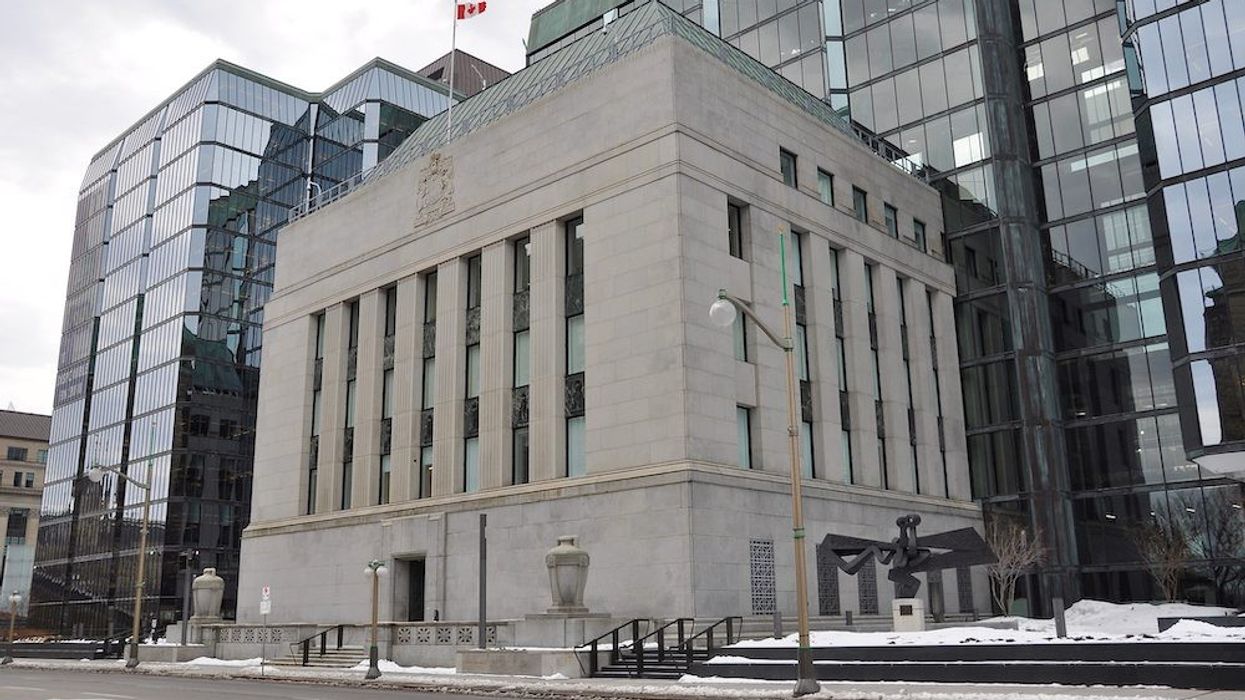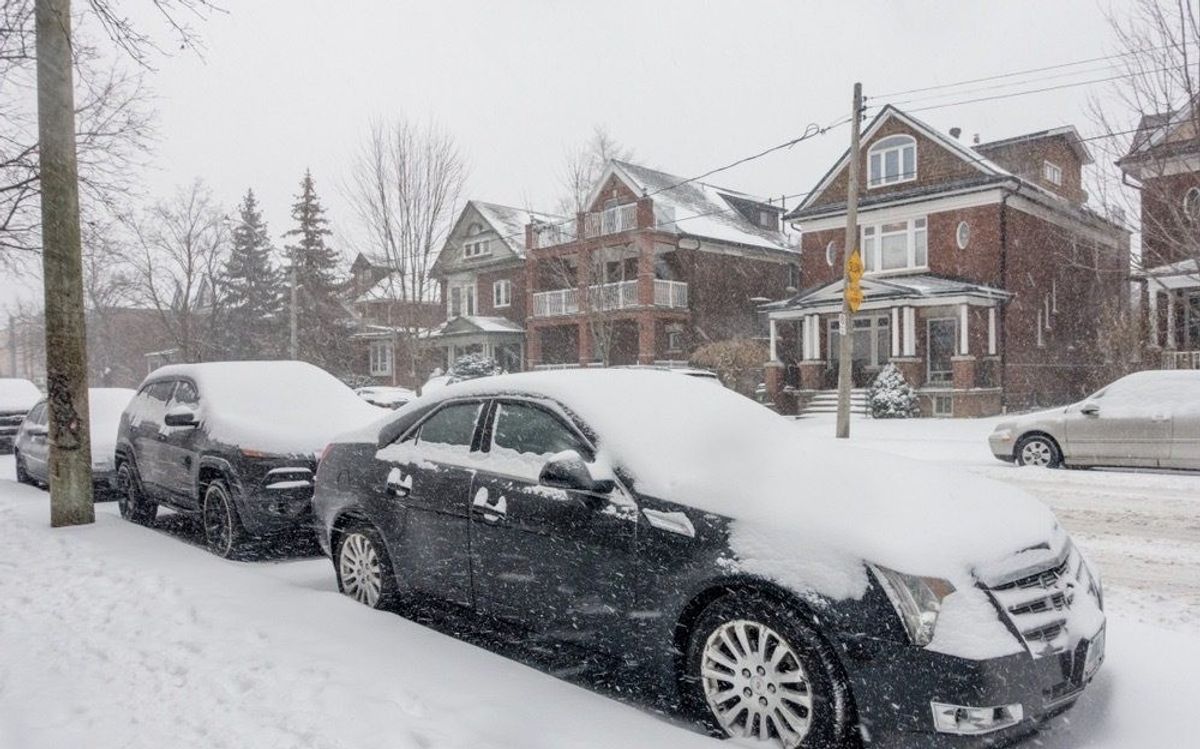The Canadian cost of borrowing just rose by the largest margin since the late '90s, as the Bank of Canada bumped up its trend-setting Overnight Lending Rate by a full 1% to 2.5% this morning. It’s the heftiest one-time increase since August 1998 -- and the central lender is signalling that there’s more to come before it’s through.
The super-sized rate hike comes as the central bank grapples with 40-year-high inflation, which hit a reading of 7.7% in May in Canada, and a searing 9.1% in the US. It’s the fourth increase made since the BoC launched its hiking cycle this year, following 0.5% increases in June and April, and a 0.25% increase in March. in total, the OLR now sits 2.25% higher than it did during the pandemic, when it was held at a record low of 0.25% as of March 2020.
“Inflation in Canada is higher and more persistent than the Bank expected in its April Monetary Policy Report (MPR), and will likely remain around 8% in the next few months,” states the Bank of Canada in its release. “While global factors such as the war in Ukraine and ongoing supply disruptions have been the biggest drivers, domestic price pressures from excess demand are becoming more prominent.”
Given this, along with excess demand in the economy, “the Governing Council decided to front-load the path to higher interest rates by raising the policy rate by 100 basis points today. The Governing Council continues to judge that interest rates will need to rise further, and the pace of increases will be guided by the Bank’s ongoing assessment of the economy and inflation.”
It adds that more than half of the components in the basket of goods that make up the CPI are increasing by more than 5%, pushing its core measures of inflation to between 3.9 - 5.4%. The BoC also references its recent quarterly consumer and business surveys, which indicated that respondents expect inflation to be higher for longer, increasing the risk it will become entrenched in price- and wage-setting.
Overall, the BoC states, global inflation is higher, due to the Russian invasion of Ukraine, as well as the ongoing supply chain snarls that have seized retail operations since the pandemic. As a result, many central banks are tightening their monetary policy; the US Federal Reserve most recently implemented a 0.75% increase to its federal funds rates in efforts to reign in inflation growth. China’s economy continues to be restricted by the effects of COVID-19 outbreaks, while oil prices maintain their volatile trend.
As a result, the Bank now expects global economic growth to slow to about 3.5% this year and 2% in 2023 before strengthening to 3% in 2024. In Canada, GDP is estimated to grow by about 4% in the second quarter, before slowing to 2% in Q3 “as consumption growth moderates and housing market activity pulls back following unsustainable strength during the pandemic.”
What This Means for Mortgage Rates
As consumer lenders’ Prime rates are based on the OLR, consumers can expect to see today’s 1% hike phased in shortly, bringing it to 4.7% from the previous 3.7%.
That's going to drive five-year variable interest rates for "A" borrowers from their current range of 2.5 - 3.4% to 3.5 - 4.75%.
READ: How This Week’s 0.75% Bank of Canada Hike Will Impact Borrowers
Fixed mortgage rates, which are already in the 4 - 6% range, will also likely rise as bonds react to the tighter monetary policy. 5-year yields are sitting at 3.1% this morning; a 0.75% increase was largely anticipated by markets and baked in, but this larger one-time hike may add more volatility to bond investor demand.
Another noteworthy impact of today’s hike is that it will render the existing mortgage stress test threshold of 5.25% null and void. Currently, borrowers must prove they could afford to carry their mortgage at this rate, or at their contract rate plus 2%, whichever is higher. A 1% hike will push all five-year variable mortgage rates available to above 3.5%, meaning only the latter criteria will remain in effect. However, OSFI is highly expected to increase the threshold to 6.09% -- the highest since the stress test's inception -- once lenders start to phase in their Prime hikes.
Will Higher Rates Lead to a Recession?
There have been growing concerns that policymakers stepping on the gas too heavily with rates could prompt a recession, with economists from several major lenders making official calls. A report out earlier this month from RBC states, “When you’re at the top of the hill the only way to go is down. Canada’s economic growth has fired on all cylinders following pandemic shutdowns. But a historic labour squeeze, soaring food and energy prices, and rising interest rates are now closing in. Those pressures will likely push the economy into a moderate contraction in 2023.”
READ: Two Scenarios, One Recession: CMHC Predicts Economic Downturn as Rates Rise
Just this week, CMHC released a recession forecast based on potential rate scenarios, saying that should the BoC rate reach 3.5% by 2023, it would indeed curb consumer growth, causing the national average home price will to decline by 5%, national home sales will likely fall by 34%, and the unemployment rate will rise to 7%. The recessionary effects would persist for two quarters.
Given there are three more rate announcements slated for this year, should BoC implement minimum 0.25% in each, the OLR will indeed come to 3.5%, the upper end of its neutral range.
The next rate announcement is scheduled for September 7, 2022.





















